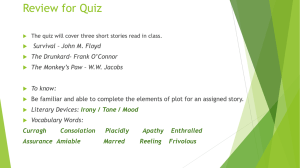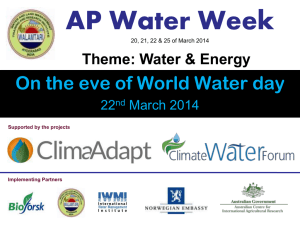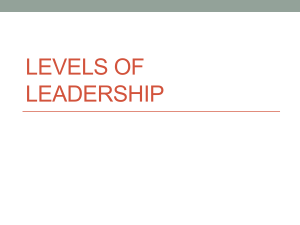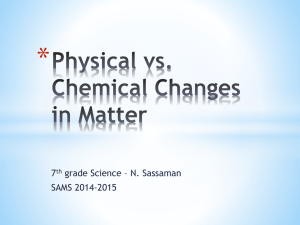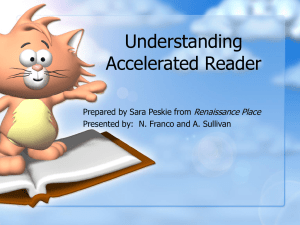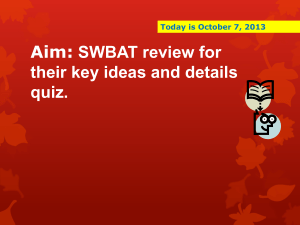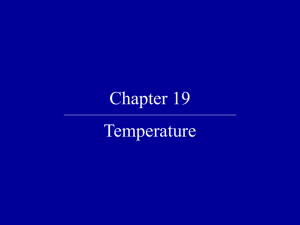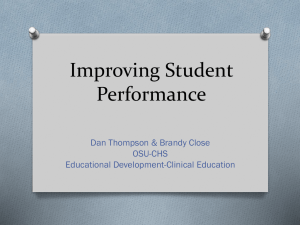IGs Chp 1
advertisement
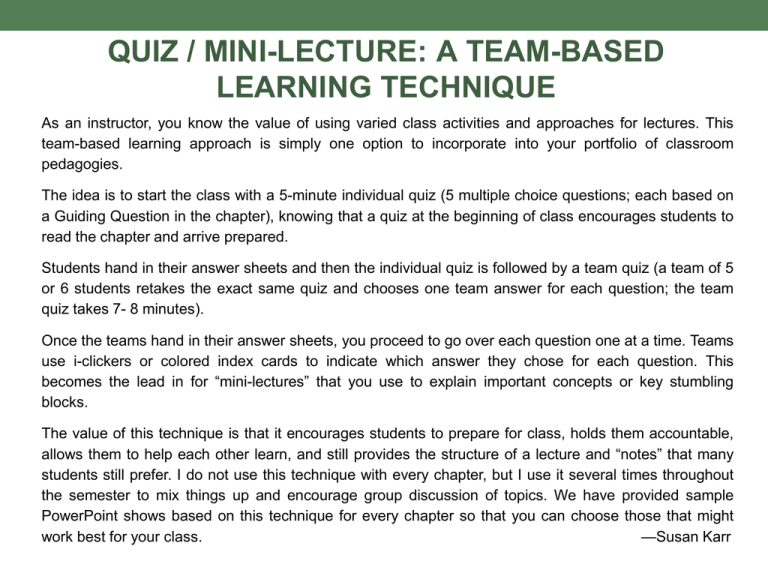
QUIZ / MINI-LECTURE: A TEAM-BASED LEARNING TECHNIQUE As an instructor, you know the value of using varied class activities and approaches for lectures. This team-based learning approach is simply one option to incorporate into your portfolio of classroom pedagogies. The idea is to start the class with a 5-minute individual quiz (5 multiple choice questions; each based on a Guiding Question in the chapter), knowing that a quiz at the beginning of class encourages students to read the chapter and arrive prepared. Students hand in their answer sheets and then the individual quiz is followed by a team quiz (a team of 5 or 6 students retakes the exact same quiz and chooses one team answer for each question; the team quiz takes 7- 8 minutes). Once the teams hand in their answer sheets, you proceed to go over each question one at a time. Teams use i-clickers or colored index cards to indicate which answer they chose for each question. This becomes the lead in for “mini-lectures” that you use to explain important concepts or key stumbling blocks. The value of this technique is that it encourages students to prepare for class, holds them accountable, allows them to help each other learn, and still provides the structure of a lecture and “notes” that many students still prefer. I do not use this technique with every chapter, but I use it several times throughout the semester to mix things up and encourage group discussion of topics. We have provided sample PowerPoint shows based on this technique for every chapter so that you can choose those that might work best for your class. —Susan Karr MUDDIEST POINT READING READINESS QUIZ 1. The field of environmental science is best described as a) the study of the natural world. b) the study of the intersection of human society and the natural world. c) the application of technology to address environmental problems. d) the combination of biology, chemistry, geology, and physics focused on understanding how natural ecosystems operate. 2. Why are environmental problems often called “wicked problems”? a) They arise out of the greed and malice of other people. b) Potential solutions almost always create additional problems. c) They cannot be solved or even effectively addressed. d) They are hard to study using empirical methods, so science can’t help find solutions. 3. The triple-bottom line is an approach to problem analysis that includes the consideration of the ________________ aspects of any potential solution. a) biological, chemical, and physical b) human, species, and Earth c) biocentric, ecocentric, and anthropocentric d) environmental, social, and economic 4. Which of the following is NOT a characteristic of a sustainable ecosystem? a) Relies on renewable and non- renewable energy sources b) Uses matter sustainably c) Has population control d) Depends on local biodiversity 5. If a society hopes to function sustainably, it should do all of the following EXCEPT a) avoid social traps like the tragedy of the commons. b) strive to decrease wealth inequity around the world. c) focus on short-term benefits to meet our immediate needs and wants. d) diversify our use of matter and energy resources. TEAM QUIZ 1. The field of environmental science is best described as a) the study of the natural world. b) the study of the intersection of human society and the natural world. c) the application of technology to address environmental problems. d) the combination of biology, chemistry, geology, and physics focused on understanding how natural ecosystem operate. 2. Why are environmental problems often called “wicked problems”? a) They arise out of the greed and malice of other people. b) Potential solutions almost always create additional problems. c) They cannot be solved or even effectively addressed. d) They are hard to study using empirical methods, so science can’t help find solutions. 3. The triple-bottom line is an approach to problem analysis that includes the consideration of the ________________ aspects of any potential solution. a) biological, chemical, and physical b) human, species, and Earth c) biocentric, ecocentric, and anthropocentric d) environmental, social, and economic 4. Which of thefollowing is NOT a characteristic of a sustainable ecosystem? a) Relies on renewable and non-renewable energy sources b) Uses matter sustainably c) Has population control d) Depends on local biodiversity Ecosystems are sustainable (otherwise they would not last). They have these four characteristics: 5. If a society hopes to function sustainably, it should do all of the following EXCEPT a) avoid social traps like the tragedy of the commons. b) strive to decrease wealth inequity around the world. c) focus on short-term benefits to meet our immediate needs and wants. d) diversify our use of matter and energy resources.
